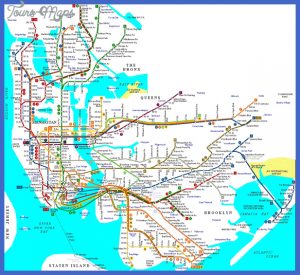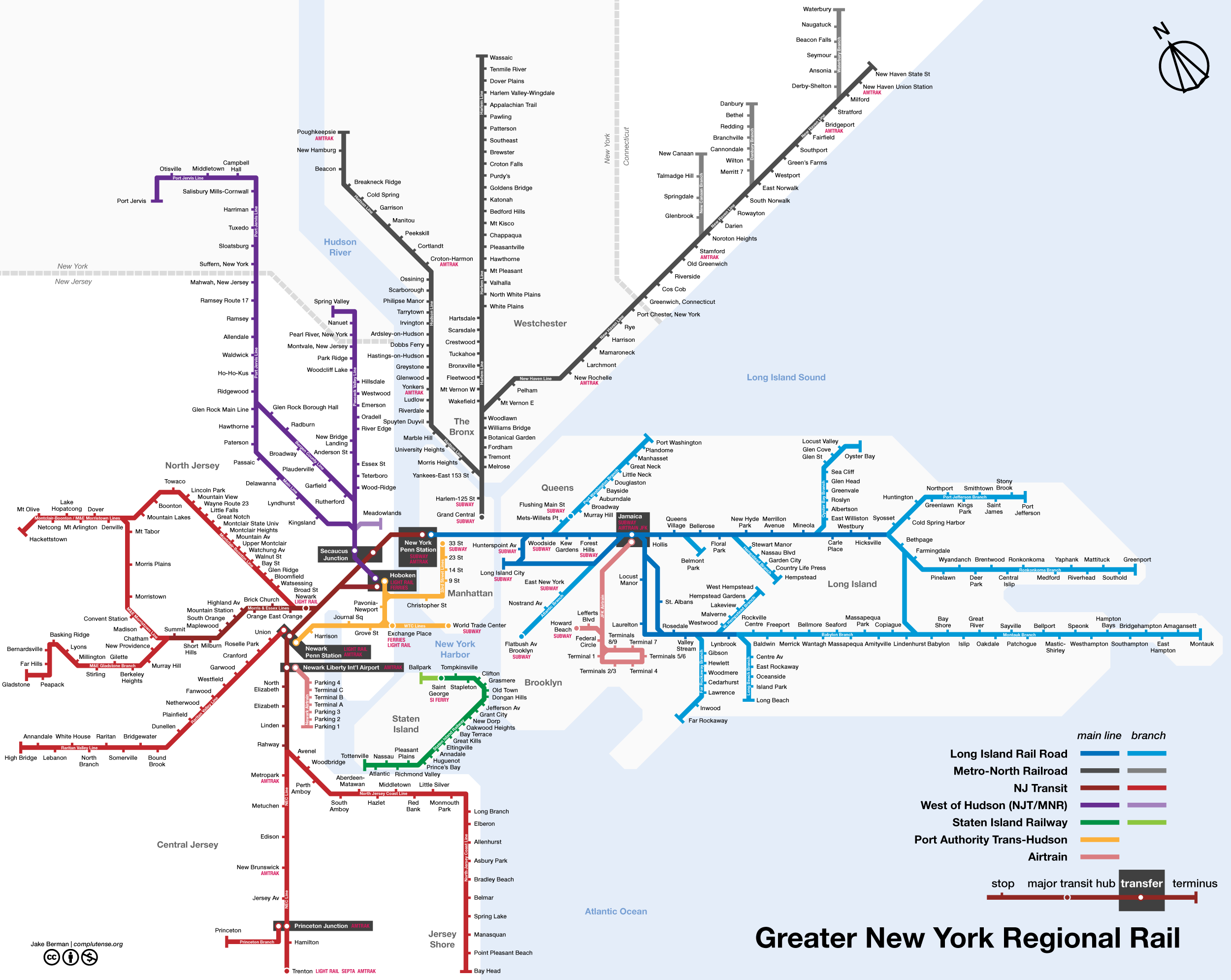


Line D: Norwood – 205th Street ↔ Coney Island - Stillwell Avenue.Line B: Bedford Park Boulevard ↔ Brighton Beach.Line A: Inwood - 207th Street ↔ Ozone Park – Lefferts Boulevard / Far Rockaway – Mott Avenue / Rockaway Park – Beach 116th Street.Line 7: Main Street - Flushing ↔ Times Square - 42nd Street.Line 6: Pelham Bay Park ↔ Brooklyn Bridge - City Hall.Line 5: Nereid Avenue - 238th Street ou Eastchester - Dyre Avenue ↔ Flatbush Avenue - Brooklyn College.Line 4: Woodlawn ↔ Crown Heights - Utica Avenue.Line 3: Harlem - 148th Street ↔ New Lots Avenue.Line 2: Wakefield - 241st Street ↔ Flatbush Avenue - Brooklyn College.Line 1: Van Cortlandt Park - 242nd Street ↔ South Ferry.Its network includes the following 23 lines: New York City subways which transport 5.3 million passengers per day, exist since 1904 and are operated by the MTA (Metropolitan Transportation Authority). New York City's subway is operated by the MTA, but the city is also served by the PATH network, which connects Manhattan to New Jersey. New York City has a 24-hour subway system that connects all boroughs (except Staten Island, which is served by the Staten Island Railway). Historically, NYC's subway is the second largest in the United States, after Boston's (the oldest).

The New York City subway is the world's largest network (in kilometres of track) and the fifth largest in the world in terms of the number of passengers per year. The lines serve The Bronx, Manhattan, Brooklyn and Queens. The New York subway system is named by letters A, B, C etc. The subway network has 24 lines and 422 stations forming a rail network of 1,452 miles (2,337 km). NYC subway, tube or underground is a transit system serving the city of New York City (United States) with the urban, suburban & commuter train, the bus or the ferry. You can find on this page the map of New York City subway.


 0 kommentar(er)
0 kommentar(er)
